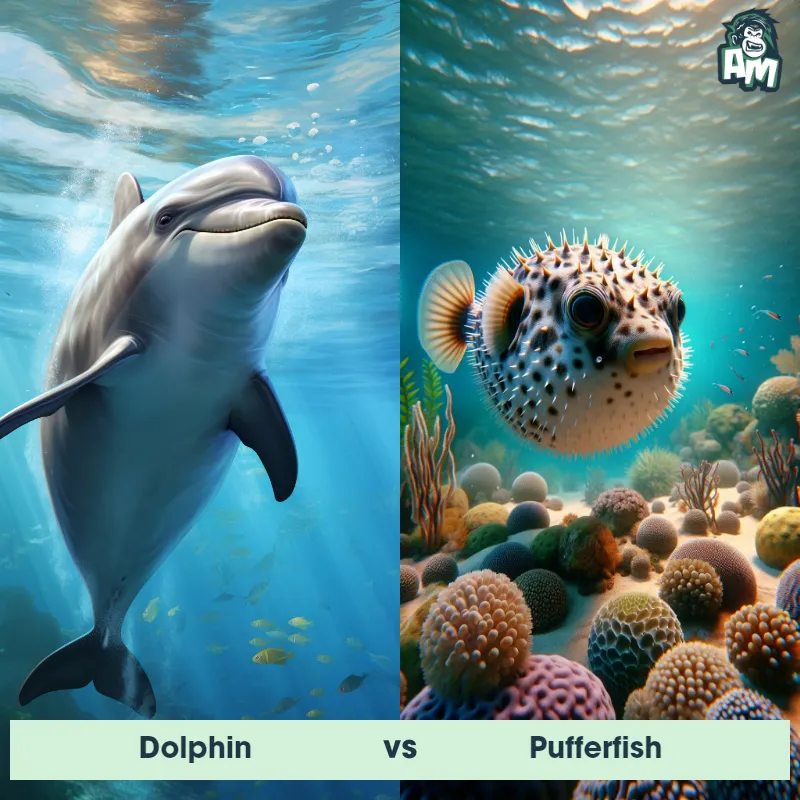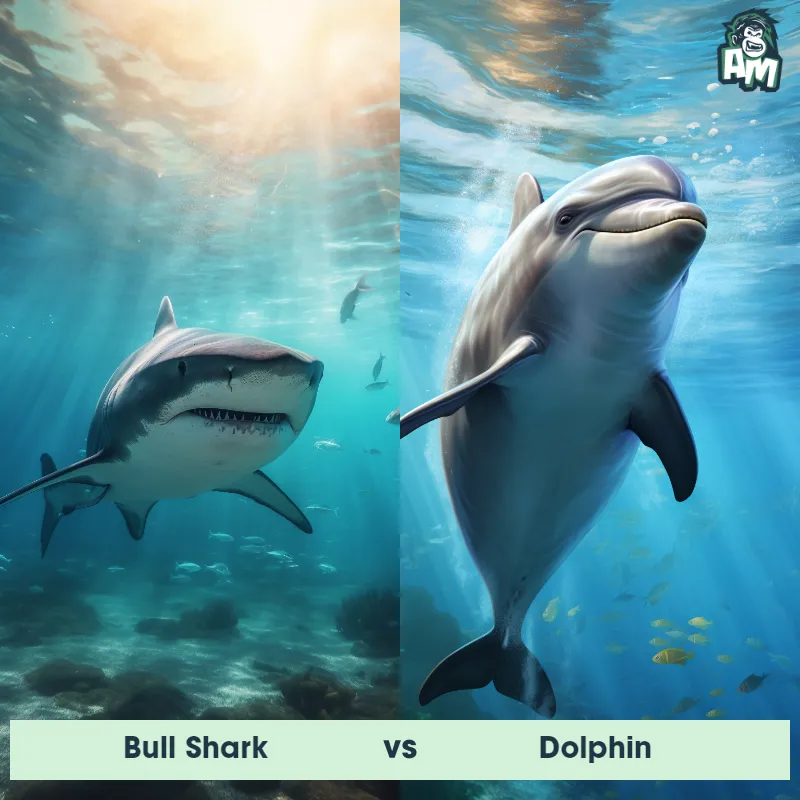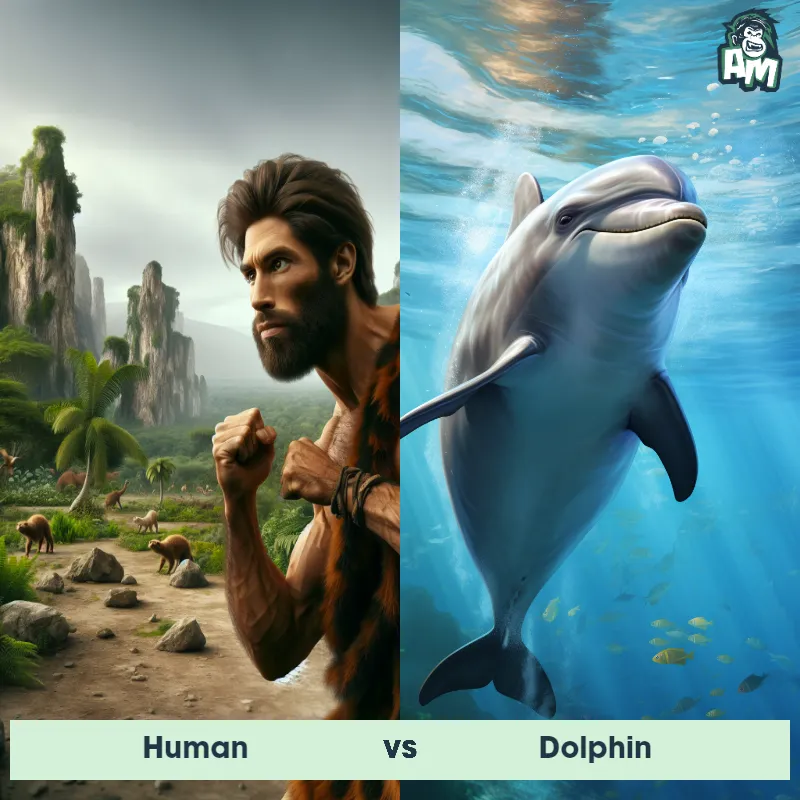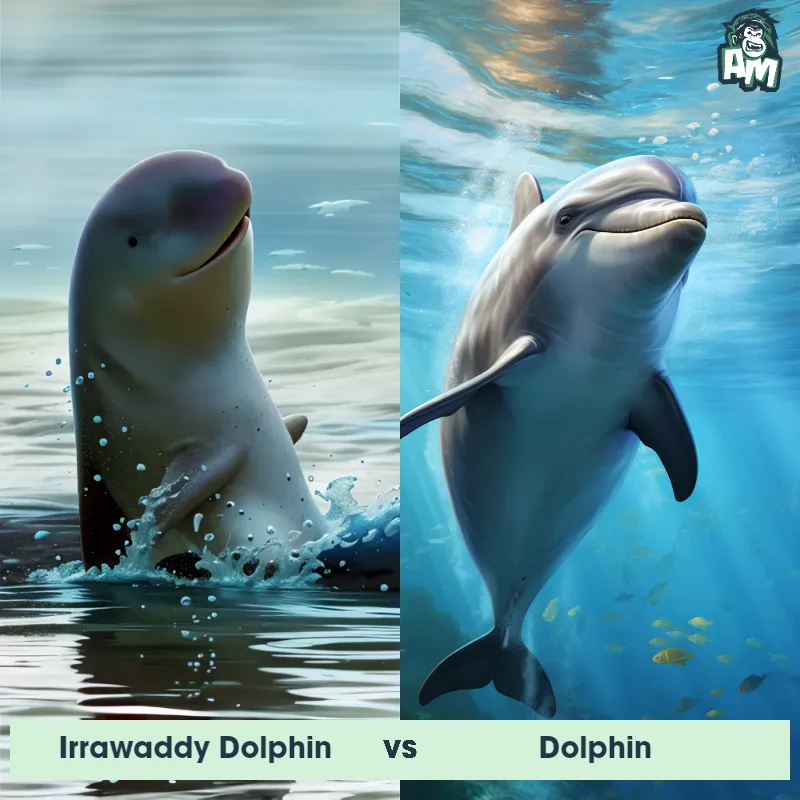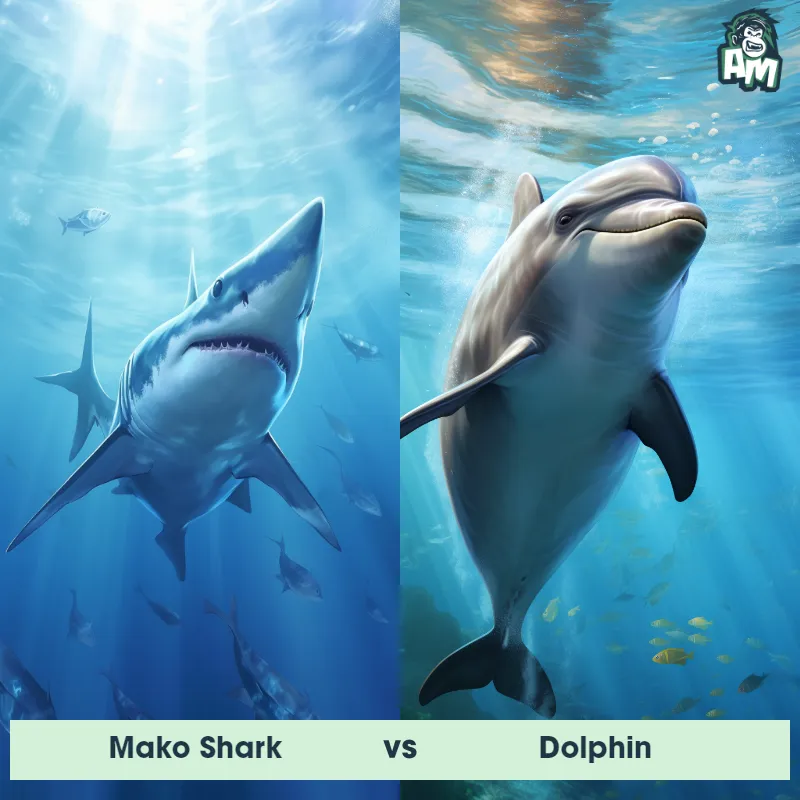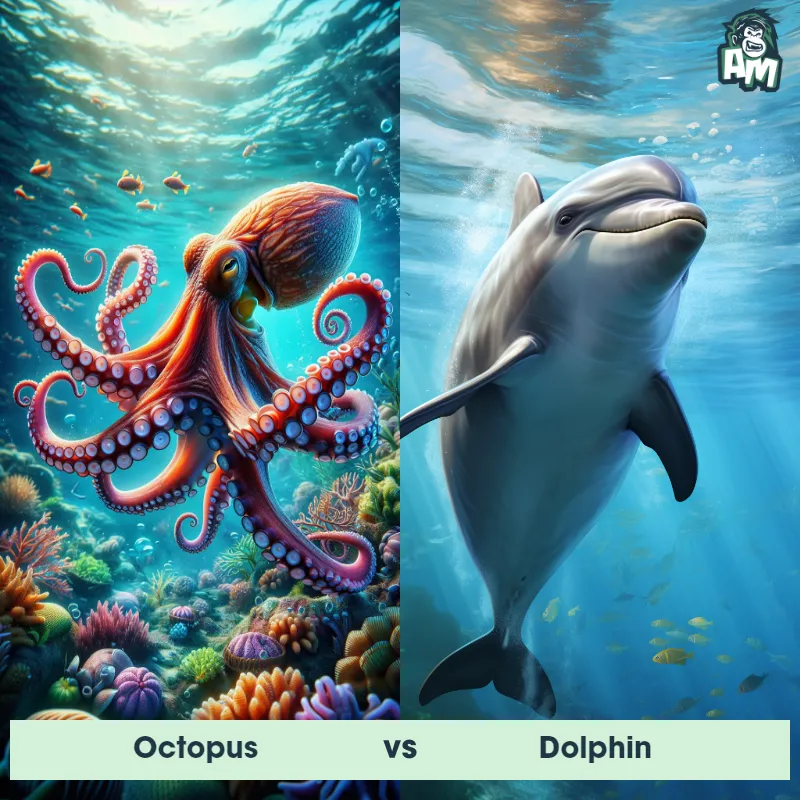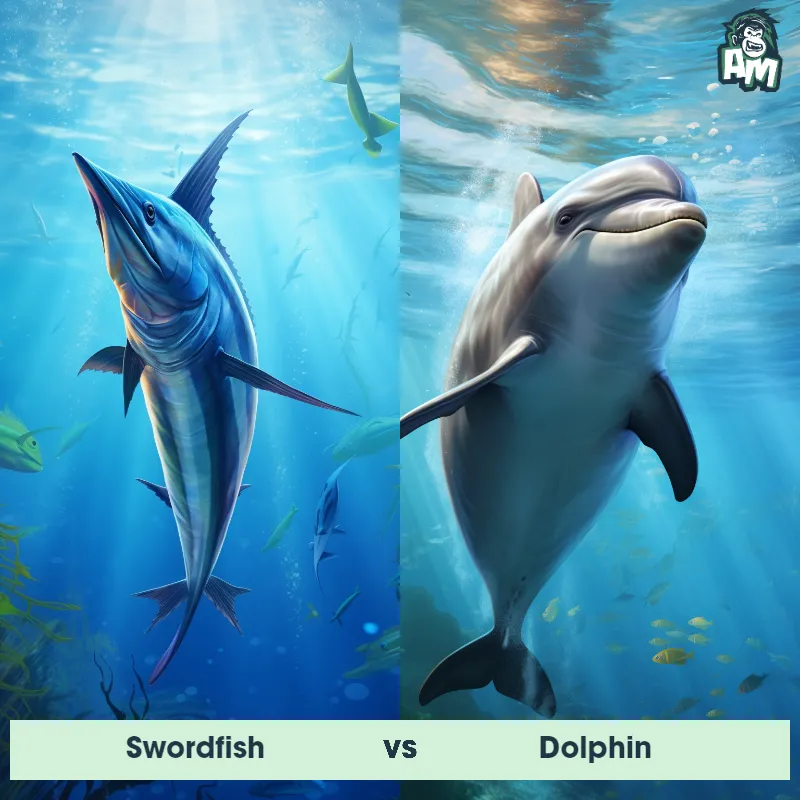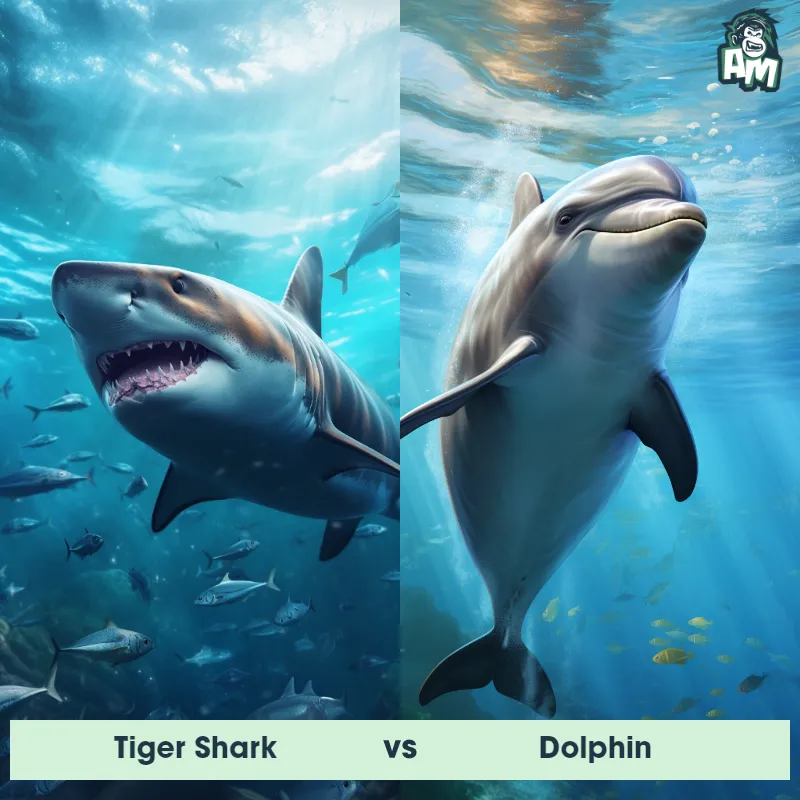The Dolphin
The dolphin, known for its intelligence and playful nature, is a marine mammal belonging to the family Delphinidae. They have streamlined bodies, well-adapted for swimming, with a long, curved dorsal fin and a large tail fluke. Their sleek skin is usually gray in color, although some species display unique patterns and markings. Dolphins possess excellent eyesight and hearing abilities, as well as the ability to use echolocation to navigate and communicate underwater. They are social animals that live in groups, known as pods, and can be found in oceans and seas around the world.

| Dolphin | |
|---|---|
| Size | 6-12.5 feet (1.8-3.8 meters) |
| Weight | 330-440 lbs (150-200 kg) |
| Speed | 22mph (35km/h) |
| Key Strength | Intelligence and speed |
| Biggest Weakness | Limited mobility on land |
| Scientific Name | Delphinus delphis |
| Family | Delphinidae |
| Habitat | Ocean and Seas |
| Geography | Worldwide, mostly in shallow seas of the continental shelves |
| Diet | Fish and Squid |
| Lifespan | 20 years - 60 years |

The Dolphin
The dolphin, known for its intelligence and playful nature, is a marine mammal belonging to the family Delphinidae. They have streamlined bodies, well-adapted for swimming, with a long, curved dorsal fin and a large tail fluke. Their sleek skin is usually gray in color, although some species display unique patterns and markings. Dolphins possess excellent eyesight and hearing abilities, as well as the ability to use echolocation to navigate and communicate underwater. They are social animals that live in groups, known as pods, and can be found in oceans and seas around the world.
Fun Fact: Dolphins are known to display a wide range of acrobatic behaviors, such as leaping out of the water, riding waves, and performing flips in the air, which are commonly referred to as "bow-riding" or "porpoising."
| Dolphin | |
|---|---|
| Size | 6-12.5 feet (1.8-3.8 meters) |
| Weight | 330-440 lbs (150-200 kg) |
| Speed | 22mph (35km/h) |
| Key Strength | Intelligence and speed |
| Biggest Weakness | Limited mobility on land |
| Scientific Name | Delphinus delphis |
| Family | Delphinidae |
| Habitat | Ocean and Seas |
| Geography | Worldwide, mostly in shallow seas of the continental shelves |
| Diet | Fish and Squid |
| Lifespan | 20 years - 60 years |
Dolphin Matchups
We use AI to simulate matchups between the Dolphin and other animals. Our simulation considers size, strength, and natural predatory behaviors to determine the most likely outcome.

Can't find the Matchup you want?
Create Your Own MatchupDolphin: Diet, Predators, Aggression, and Defensive Behaviors
What do Dolphins eat?
Dolphins are carnivorous marine mammals that primarily feed on fish and squid. They have sharp teeth that are perfectly designed for catching and consuming their prey. In addition to fish and squid, dolphins may also eat crustaceans and other small marine animals. Their diet varies depending on the species of dolphin and their habitat.
Do Dolphins have any predators?
While dolphins are apex predators in the ocean and are not typically preyed upon by other animals, they do have a few natural predators. Sharks, specifically tiger sharks and great white sharks, are known to attack and kill dolphins. Large species of killer whales, or orcas, have also been known to prey on dolphins. However, these instances are relatively rare as dolphins are highly intelligent and social animals that often work together to protect each other.
Are Dolphins aggressive?
Dolphins are generally not aggressive animals and are known for their playful and friendly behavior. They are highly social creatures that form strong bonds within their pods. However, dolphins can exhibit aggressive behavior towards other marine animals or humans if they feel threatened or provoked. It is important to remember that dolphins are wild animals and should be treated with caution and respect.
Do Dolphins fight?
While dolphins may engage in playful fighting or sparring as a form of social interaction or dominance display, they are not usually involved in serious physical fights. Dolphins are more likely to rely on their speed, agility, and intelligence to avoid confrontations or defend themselves in potentially dangerous situations. They typically prioritize cooperation and communication within their pod to resolve conflicts peacefully.
How do Dolphins defend themselves?
Dolphins have several defense mechanisms to protect themselves from potential threats in their environment. They are known to use their remarkable swimming abilities to outmaneuver predators and escape danger. Dolphins can also produce high-frequency sounds, known as echolocation clicks, to navigate, communicate with each other, and sense their surroundings. Additionally, dolphins may form a tight circle around vulnerable members of their pod to provide protection and support in the face of a potential threat.
What is Dolphins' biggest weakness in a fight?
Despite their intelligence, strength, and agility, dolphins have some vulnerabilities when faced with aggressive predators or threats. One of their main weaknesses in a fight is their relatively small size compared to larger marine predators like sharks or killer whales. Dolphins may struggle to overpower or defend themselves against larger and more powerful adversaries. However, dolphins often rely on their social bonds, communication skills, and strategic coordination to overcome challenges and ensure the safety of their pod members.
Fun Fact: Dolphins communicate with each other using a complex system of clicks, whistles, and body movements, making them highly skilled in vocal and nonvocal communication. They are even capable of developing unique signature whistles that function as their individual names within the pod.
Fun Fact: In order to sleep, dolphins have the remarkable ability to rest one half of their brain at a time, allowing them to maintain awareness of their surroundings and potentially avoid danger while still getting much-needed rest. This adaptation is known as unihemispheric sleep.



